Abstract
This study was designed to assess the effects of the North Carolina Improved Pregnancy Outcome (IPO) Project on use of prenatal care and incidence of low birthweight among its primarily Black registrants . Weighted least squares and stratified analysis procedures were used to scrutinize vital statistics data for subpopulation effects. IPO services were received by 51.7 per cent of Black women in the counties served by the project. For all Black registrants , the risk of receiving less than adequate prenatal care was 55.1 per cent of that of the comparison group. For Black teenage registrants , the risk was even less: 37.2 per cent of that of the comparison group. Nevertheless, no corresponding effects on the incidence of low birthweight could be detected. The evaluation methods used in this study can be applied to programs for mothers and infants in other locales to generate useful and practical information for state-level decision-making.
Full text
PDF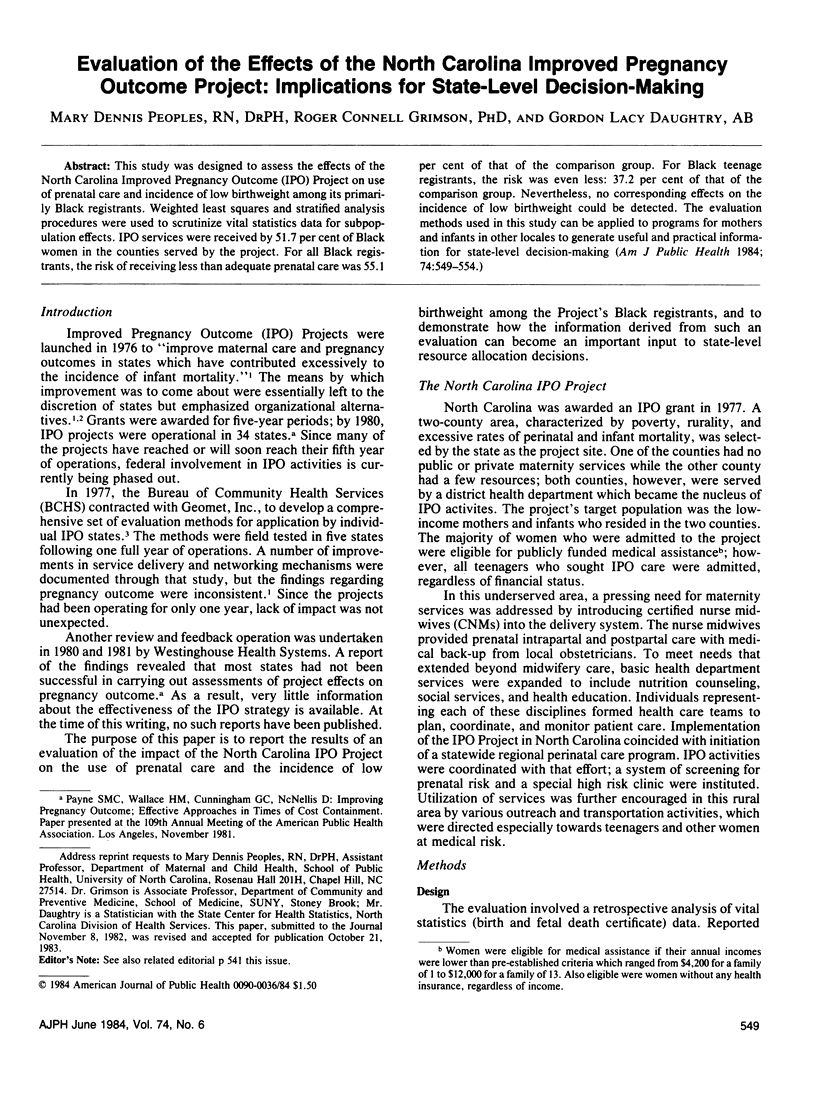
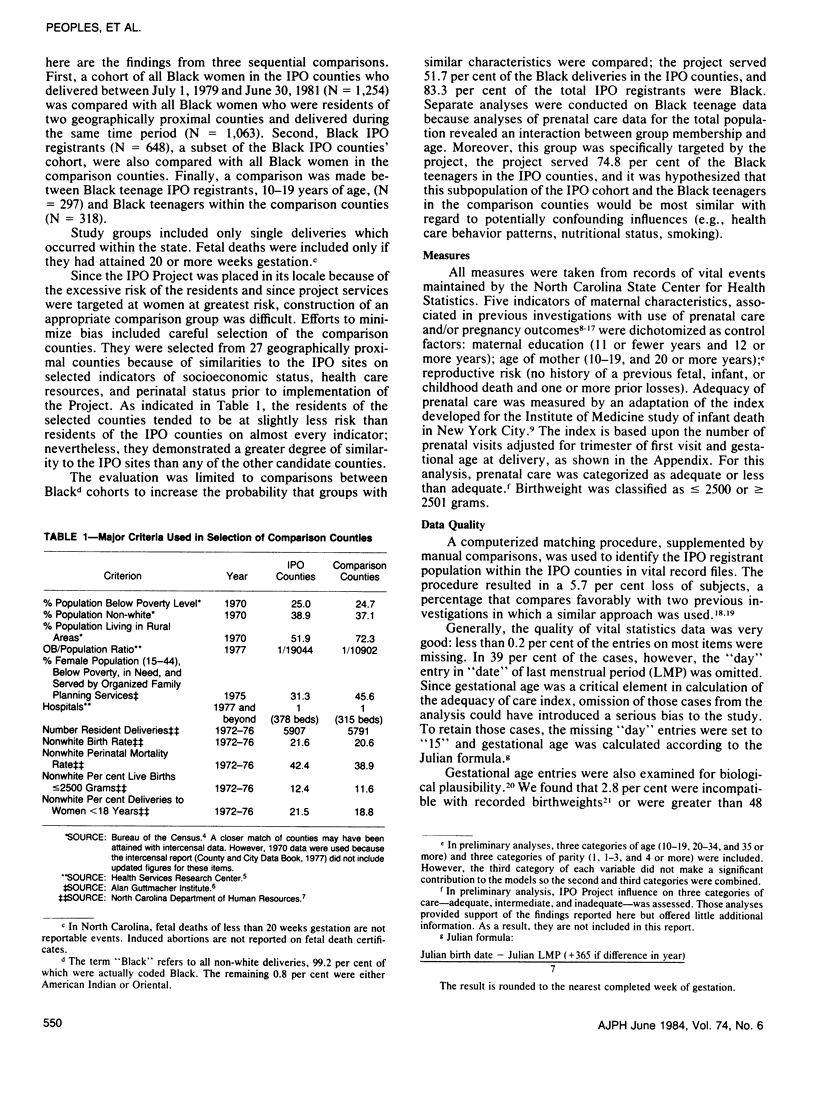
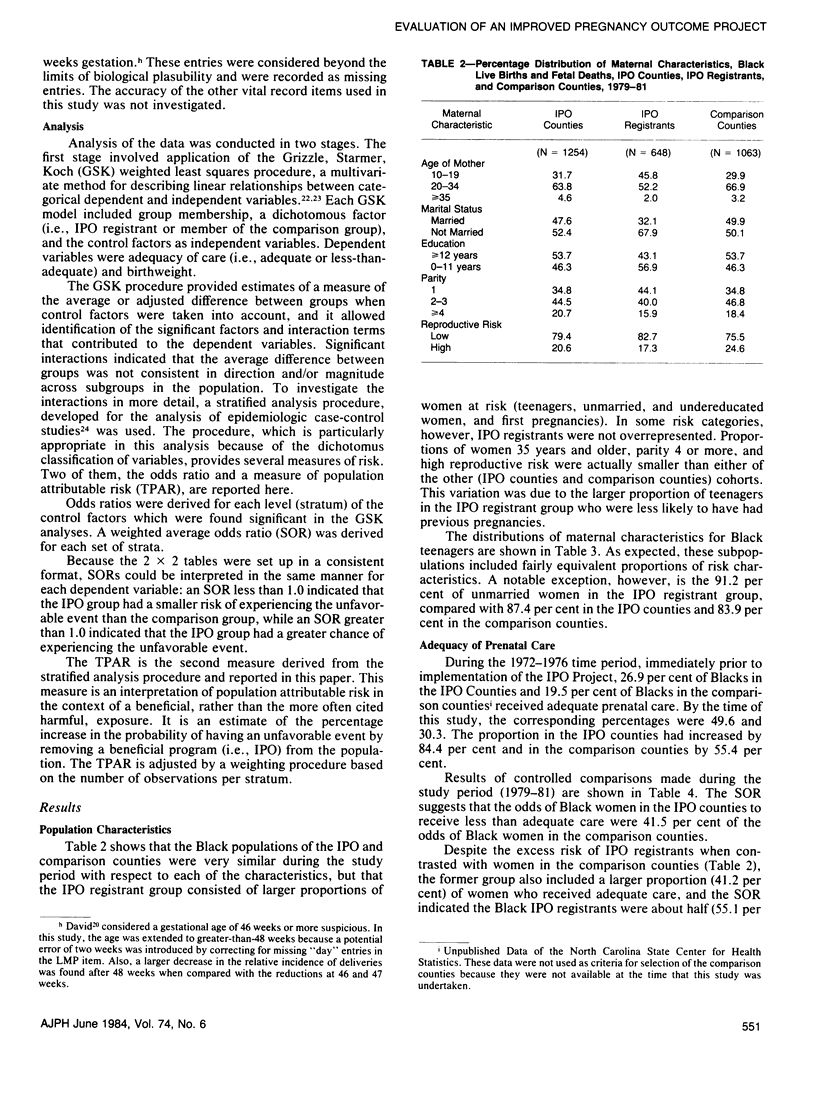
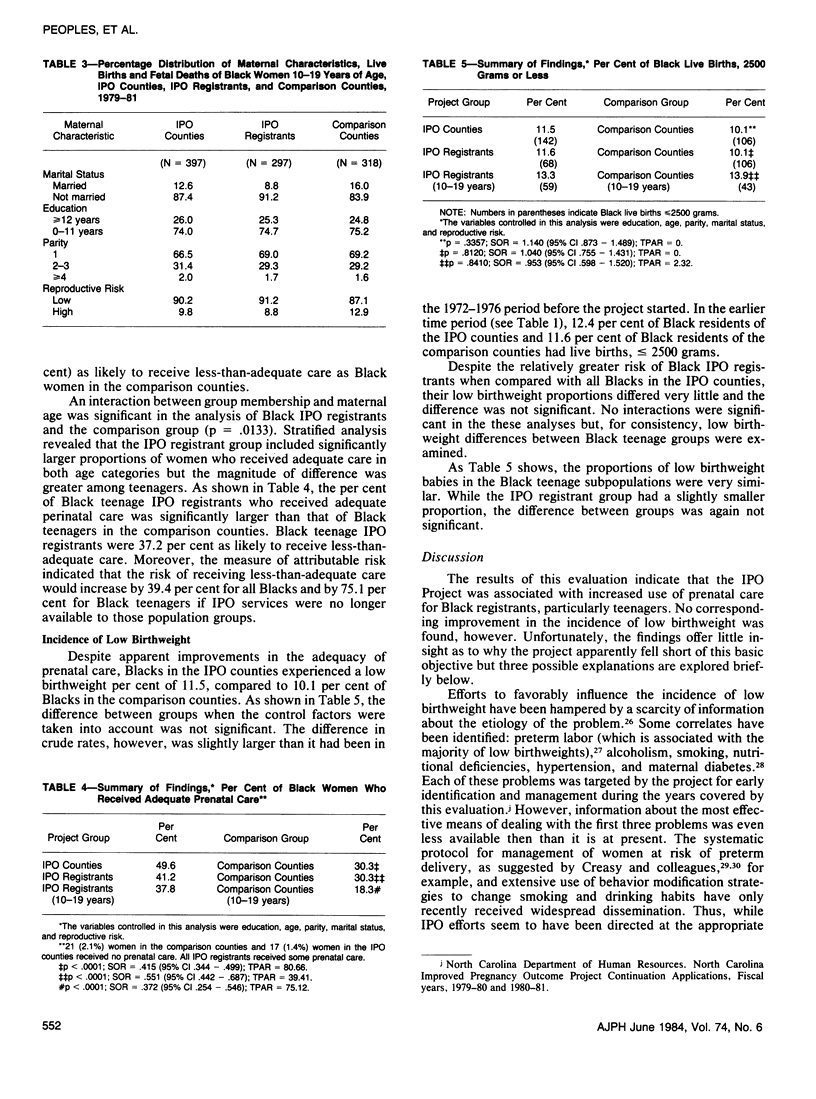
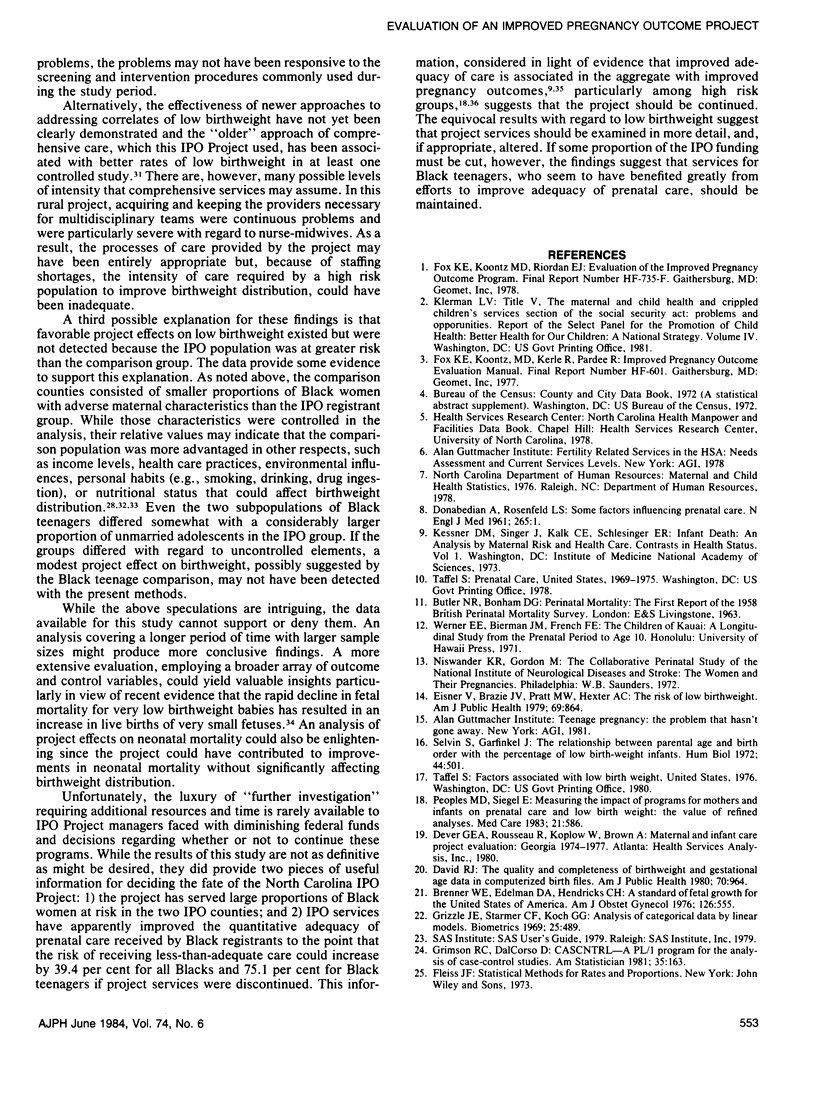
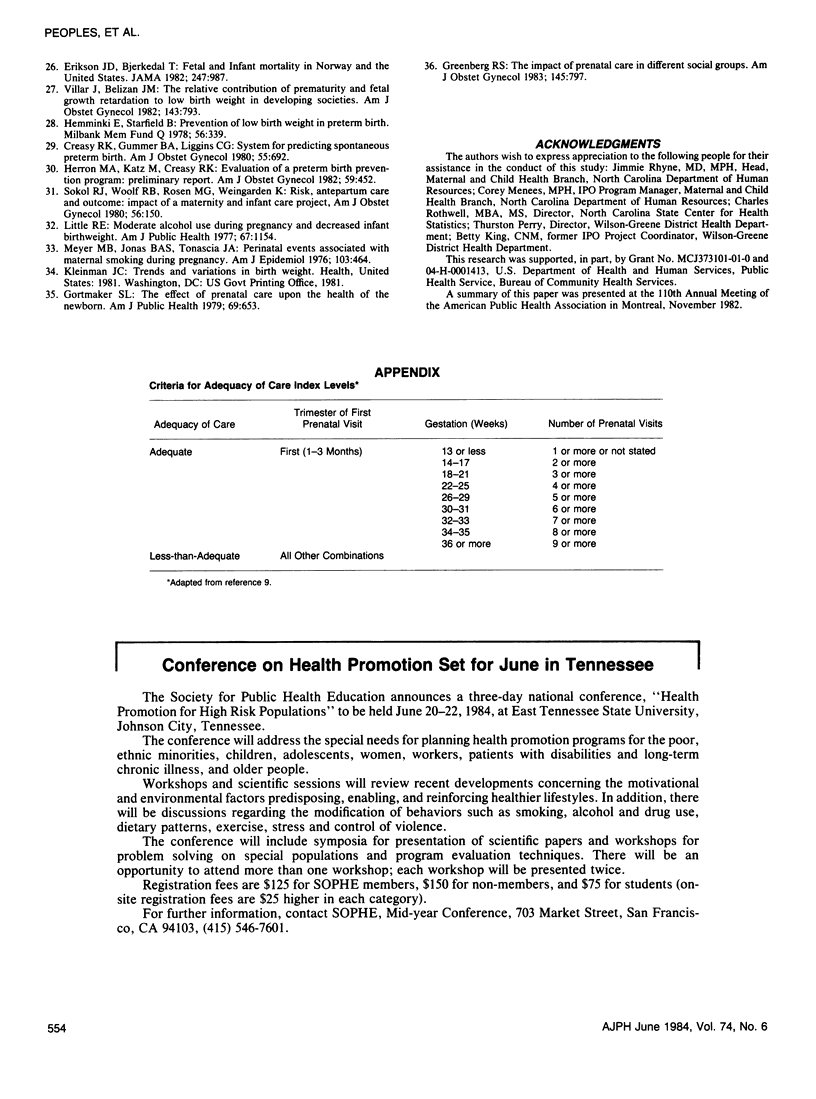
Selected References
These references are in PubMed. This may not be the complete list of references from this article.
- Brenner W. E., Edelman D. A., Hendricks C. H. A standard of fetal growth for the United States of America. Am J Obstet Gynecol. 1976 Nov 1;126(5):555–564. doi: 10.1016/0002-9378(76)90748-1. [DOI] [PubMed] [Google Scholar]
- Creasy R. K., Gummer B. A., Liggins G. C. System for predicting spontaneous preterm birth. Obstet Gynecol. 1980 Jun;55(6):692–695. [PubMed] [Google Scholar]
- DONABEDIAN A., ROSENFELD L. S. Some factors influencing prenatal care. N Engl J Med. 1961 Jul 6;265:1–6. doi: 10.1056/NEJM196107062650101. [DOI] [PubMed] [Google Scholar]
- David R. J. The quality and completeness of birthweight and gestational age data in computerized birth files. Am J Public Health. 1980 Sep;70(9):964–973. doi: 10.2105/ajph.70.9.964. [DOI] [PMC free article] [PubMed] [Google Scholar]
- Erickson J. D., Bjerkedal T. Fetal and infant mortality in Norway and the United States. JAMA. 1982 Feb 19;247(7):987–991. [PubMed] [Google Scholar]
- Gortmaker S. L. The effects of prenatal care upon the health of the newborn. Am J Public Health. 1979 Jul;69(7):653–660. doi: 10.2105/ajph.69.7.653. [DOI] [PMC free article] [PubMed] [Google Scholar]
- Greenberg R. S. The impact of prenatal care in different social groups. Am J Obstet Gynecol. 1983 Apr 1;145(7):797–801. doi: 10.1016/0002-9378(83)90681-6. [DOI] [PubMed] [Google Scholar]
- Grizzle J. E., Starmer C. F., Koch G. G. Analysis of categorical data by linear models. Biometrics. 1969 Sep;25(3):489–504. [PubMed] [Google Scholar]
- Hemminki E., Starfield B. Prevention of low birth weight and pre-term birth: literature review and suggestions for research policy. Milbank Mem Fund Q Health Soc. 1978 Summer;56(3):339–361. [PubMed] [Google Scholar]
- Herron M. A., Katz M., Creasy R. K. Evaluation of a preterm birth prevention program: preliminary report. Obstet Gynecol. 1982 Apr;59(4):452–456. [PubMed] [Google Scholar]
- Little R. E. Moderate alcohol use during pregnancy and decreased infant birth weight. Am J Public Health. 1977 Dec;67(12):1154–1156. doi: 10.2105/ajph.67.12.1154. [DOI] [PMC free article] [PubMed] [Google Scholar]
- Meyer M. B., Jonas B. S., Tonascia J. A. Perinatal events associated with maternal smoking during pregnancy. Am J Epidemiol. 1976 May;103(5):464–476. doi: 10.1093/oxfordjournals.aje.a112248. [DOI] [PubMed] [Google Scholar]
- Peoples M. D., Siegel E. Measuring the impact of programs for mothers and infants on prenatal care and low birth weight: the value of refined analyses. Med Care. 1983 Jun;21(6):586–608. doi: 10.1097/00005650-198306000-00002. [DOI] [PubMed] [Google Scholar]
- Selvin S., Garfinkel J. The relationship between parental age and birth order with the percentage of low birth-weight infants. Hum Biol. 1972 Sep;44(3):501–509. [PubMed] [Google Scholar]
- Sokol R. J., Woolf R. B., Rosen M. G., Weingarden K. Risk, antepartum care, and outcome: impact of a maternity and infant care project. Obstet Gynecol. 1980 Aug;56(2):150–156. [PubMed] [Google Scholar]
- Villar J., Belizán J. M. The relative contribution of prematurity and fetal growth retardation to low birth weight in developing and developed societies. Am J Obstet Gynecol. 1982 Aug 1;143(7):793–798. doi: 10.1016/0002-9378(82)90012-6. [DOI] [PubMed] [Google Scholar]
- Williams R. L., Hawes W. E. Cesarean section, fetal monitoring, and perinatal mortality in California. Am J Public Health. 1979 Sep;69(9):864–870. doi: 10.2105/ajph.69.9.864. [DOI] [PMC free article] [PubMed] [Google Scholar]


